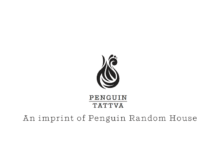
News breaks very fast across multiple platforms. Nicholas Dawes says that becomes one of the most challenging aspects of his job as the chief editorial officer at HT Media, India. Dawes was in Mumbai for the Wan-Ifra Conference and Expo in October 2015. In a chat with Gayatri T Rao of RIND Survey, he explains how his company is dealing with this and other major challenges confronting the newspaper industry.
Gayatri Rao: What are some of the recent developments in terms of initiatives taken at HT Media?
Nicholas Dawes: We are involved in a very big project at the moment – an all-new newsroom for all of our three main titles – Hindustan Times, Mint and the Hindi daily Hindustan. And currently, we are migrating to an all-new content management system. This will be a very integrated way of working between our print and digital teams. We are dramatically overhauling how our day works and our job descriptions. We hope that our digital drives the process.
GR: You have interests in print, electronic and digital. How does one supplement the other?
ND: You can use digital to stitch all of these together, synergies between them, capitalize them and to accelerate them. So digital is a powerful way to find new value in your content, to find new audiences and reach them and even to develop new brands.
GR: You have several printing sites across India. How do you ensure uniformity of excellence on the editorial side as well as in print production?
ND: From the editorial perspective, one of the ways we are trying to ensure uniformity is to bring everyone to a single platform. So the editor in Delhi can see whatever is being done in Bhopal or Ranchi. Similarly, an editor in Bhopal or Ranchi can see what is being done in Delhi. That way everyone can know in a live sense what is going on in the system. But of course technology is just one piece of the whole. The other piece is culture and training. So, we are greatly upgrading our investments in training. And working harder to shift our culture to high quality in whatever we do.
GR: What are some of the tough challenges editors like you face today?
ND: Oh that’s a big question. We face all kinds of challenges. One is that we live in a much accelerated world. News breaks very fast on multiple platforms. It’s contested. So we no longer earn the conversation anymore. We have all kinds of different competitions, which we did not imagine before that we would have. They are TV and new websites being launched every day. There’s social media conversations that’s going on. We used to have a lot of stability and security in our environment. We knew basically what we had to do every day. We had to put out a newspaper. Now we have to wake up and reinvent our business.
GR: What is your impression of the media scene in India?
I think the media scene in India is one of the most dynamic in the world. It’s exposed to all the global changes that are happening and it’s adopting and making it one of its own in a very compelling way. You hear a lot about what’s happening in the English space. But what’s actually happening in the language space – Hindi, Telugu, Malayalam, Marathi is extraordinary. The kind of abilities it brings together in a big strong traditional industry with connecting capability makes the Indian newspaper industry the most interesting place to work in.

















